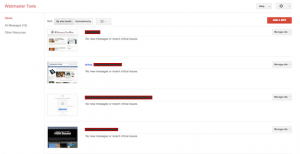
- StockSnap / Pixabay
In this actionable SEO checklist, we’ll cover the key areas to focus on in 2021 – including BERT, EAT, voice search, Core Web Vitals, and more.
To start off, let’s take a close look at some of the biggest factors that will impact search results in 2021.
Get ready for the Core Web Vitals update
In May 2021, Google will roll out a major change to their algorithm that will place far more emphasis on “page experience,” particularly three site performance measures known as Core Web Vitals.
Core Web Vitals include:
- Largest Contentful Paint (LCP). LCP measures loading performance. Ideally, Google says, the LCP should occur within 2.5 seconds.
- First Input Delay (FID). FID tracks how long it takes a page to become interactive. Google recommends having an FID of less than 100 milliseconds.
- Cumulative Layout Shift (CLS). CLS is a measure of a page’s visual stability. Sites should have a CLS score of less than 0.1.
A page’s score will depend on a number of factors, such as the hosting provider, the site’s code, and the number of images on the page.
Core Web Vitals will be combined with other page experience metrics that Google has already been using to rank sites, such as:
- Mobile-friendliness. Whether a site is optimized for viewing on mobile devices.
- Safe browsing. Whether Google’s Safe Browsing has detected security issues such as malware, deceptive pages, or harmful downloads.
- HTTPS. Whether sites provide content through the secure HTTP protocol.
- No intrusive interstitials. Whether sites have pop-ups that block site content upon arrival to the page.
To better understand diagnose your site’s performance, check out this list of tools to measure Core Web Vitals.
Prepare for BERT
Google BERT matches content to search intent.
Someone who searches for “how to cook Alfredo,” for instance, is most likely searching for recipes, not canned Alfredo sauce. Pages that match the keywords but deliver different content will be outranked by pages that actually meet the searcher’s needs.
Here are a few tips that can help you create content that better meets your audience’s needs:
- See what’s already ranking. Look at the results for a search term, then see what is ranking the highest. Chances are, that type of content is what searchers are looking for.
- Categorize a search term’s intent. For the most part, people search for four types of keywords: commercial, transactional, informational, and navigational.
- Understand your customers’ needs. Customers’ needs will differ at each stage of the marketing funnel, so it pays to know where specific keywords fall on that funnel.
For best results, this process should be integrated with other relevant marketing activities such as persona creation, customer journey mapping, and content development.
Understand the “E-A-T” principle
Since 2014, Google employees have been manually reviewing web content to assess its quality.
Over the years, Google has placed more weight on E-A-T guidelines.
There is some debate as to whether or not manual content quality ratings actually impact search results, but virtually all SEO professionals agree that E-A-T will continue to become more crucial in the years ahead.
The acronym stands for:
- Expertise. To demonstrate expertise to Google, it is best to have actual experts write your content. Medical content, for instance, should be written by medical professionals and IT-related content should be written by IT professionals.
- Authority. Authority measures, in essence, whether others perceive you as a leader. Google measures this by evaluating external factors such as brand mentions, branded searches, media covering, Wikipedia, news articles and more reputation factors.
- Trustworthiness. Demonstrating credibility assures Google – as well as your site visitors – that your site and your organization are legitimate and real. To do this, add information on your site such as a privacy policy, a physical address, and a phone number. Getting good Google reviews is another way to show Google that your organization can be trusted. In terms of content creation – try to cite trustworthy sources, add informative external links based on real numbers & stats, try to achieve some inbound links from popular websites to demonstrate your brand reliability.
Naturally, this is a long-term strategy and not a quick fix – but it is no less important than any of the other tactics discussed here.
Optimize for voice search
Voice search has been growing in popularity and it will only become more popular in the years ahead.
According to a 2020 study by Perficient, for instance, 55% of people used voice search when asking questions of their smartphones. And, given the projected growth of adjacent industries, such as voice recognition and smart speakers, it is unsurprising that most SEO experts emphasize the need to optimize for voice search.
When compared to text-based searches, voice search may still be in its early days, but SEO professionals have begun to hone in on a few best practices and trends:
- Add speakable schema markup to your site
- Optimize for long-tail conversational keywords, since most voice queries are highly specific
- If you are a local business, optimize for local search, since a significant portion of mobile-based voice searches are for local companies and services
- Dig into data and analytics to understand how your customers will use voice search, then create suitable content
- Write how you would talk – Google will, after all, read your content aloud, and some research suggests that voice results favor content that is written at or below high-school level
Although the research is a few years old, Backlinko performed an in-depth study that reveals what types of factors Google considers when it comes to voice search.
Cover your bases with these SEO checklists
The sections above covered some of the biggest trends that will affect SEO in 2021 and beyond, but it’s important not to forget the fundamentals.
The action items below cover the pillars of SEO, including on-page SEO, off-page SEO, keyword research, and technical SEO.
The Fundamentals:
- Set up Google Search Console
- Install and set up Google Analytics (remember to connect between GA & GSC)
- Add a robots.txt file (Disallow non-indexable folders / specific roots)
- Create and submit a sitemap (if you use Yoast it should mostly be www.yoursite.com/sitemap_index.xml)
- Ensure that your site is indexed.
Keyword, audience, and competitor research:
- Find your core keywords and long-tail variations
- Research your competitors thoroughly – rankings, keywords gap, PPC ads, backlinks, etc.
- Conduct a SWOT analysis for you and for each competitor.
- Discover your organic competitors (not necessarily your core-business competitors).
- Prepare a list of relevant keywords
- Perform a search intent analysis of those keywords
- Uncover question keywords
- Build a strategy that focuses on ranking difficulty, search volume, relevant trends & intent-based searches and queries.
Maintenance, Technical & On-page SEO:
- Analyze site performance
- Ensure your site is responsive
- Check URLs to ensure they include keywords
- Audit & monitor your site and check for broken links (internal & external), crawl errors, and 404s
- Shorten URLs when possible
- Check page depth
- Implement schema markup.
- Implement breadcrumbs
- Fix canonical tags
- Make sure you meet the SEO page structure requirements: H1 (must be), H2, H3, etc..
- Fix metadata when needed (SEO title, Meta Description, Main Keyword)
- Make sure you have ALT tags for images
- Trim irrelevant content
- Remove duplicate content
- Refresh old / outdated content and change dates
- Add rich-content, such as embedded video, infographics, and social media
- Improve internal linking
Off-page SEO:
- Get listed in Google My Business, local citation sites, and other directory sites
- Conduct a backlink analysis
- Use video marketing and social media marketing to gain inbound links and off-page brand mentions
- Get links from unlinked brand mentions
- Use site audit tools to find competitors’ broken backlinks, then try to take them for yourself
- Perform a backlink audit & link analysis in order to control your link risk management
- Disavow untrusted links to your site via Google Search Console
- Build backlinks through guest blogging, outreach, and influencer marketing
Finally, we’ll close this checklist with a bonus tip.
A golden tip – how to write attractive SEO titles that grab clicks
Thanks to maps, business listings, video results, Featured Snippets, and more, the average click-through rate (CTR) is down across the board, making it more important than ever to grab attention and engage visitors.
One of the best ways to see quick boosts in click-throughs is by adding a few “magic words” to your SEO titles.
Below are several different types of attention-grabbers to add to your new or existing content.
Emotional words:
- Amazing
- Awesome
- Incredible
- Remarkable
- Astonishing
- Odd
- Weird
- Genuine
- Ultimate
- Complete
- Innovative
- Fast
- Crazy
- Hot
- Proven
- Powerful
Numbers:
- 5, 7, 10, etc.
- Percentages
- Fractions
- Years
Comparisons and topic overviews:
- Vs.
- Comparison
- Difference
- Overview
- 101
Interesting facts and findings:
- Research
- Review
- Results
- Survey
- Stats
- Statistics
- Summary
- New
- Trends
- Infographic
Knowledge share:
- Step-by-step
- How to
- What is
- Tips
- Tools
- Guide
- Guideline
- Checklist
- Strategies
- Do’s and Don’ts
- Techniques
- Best practices
Naturally, words such as these shouldn’t be used simply as click-bait – they should match search intent, as mentioned above, and the content should deliver real value to visitors.
Build an SEO toolbox
Below is a list of some of the best tools that can help with core SEO activities, such as keyword research and outreach.
Keyword research, audience research, and site audit tools:
- Ahrefs
- SEMrush
- MOZ
- Majestic
- AnswerThePublic
- Exploding Topics
- BuzzSumo
- SparkToro
- Ubersuggest
- Google Search Console
- Google Trends
- Keyword Planner
Technical SEO Tools:
- Screaming Frog
- DeepCrawl
- GTmetrix
- Pingdom
- WebPagetest
- Lighthouse
- Structured Data Testing Tool
- Google Analytics
- PageSpeed Insights
- Google Search Console
SEO Browser Extensions:
- SimilarWeb
- Keyword Surfer
- Keywords Everywhere
- SEOquake
- META SEO inspector
- MozBar
- Ahrefs SEO Toolbar
- SEO Minion
- Ubersuggest
- Google PageSpeed Insights
- Structured Data Testing Tool
WordPress Plugins:
Outreach Tools and Platforms:
Most of the tools here offer free features or, at the very least, have free trial plans you can take advantage of.
Final Thoughts
In 2021 and beyond, the user experience may very well be the trend that defines SEO.
Core Web Vitals, BERT, E-A-T and other factors, for instance, indicate that Google is placing a greater emphasis on user intent, user engagement, content relevance, and the bottom-line real value of that content.
To keep up in this changing landscape, it is important to maintain a comprehensive SEO strategy, while also “thinking outside the technical SEO box” to focus on delivering better experiences and higher quality content across multiple channels.
Digital & Social Articles on Business 2 Community
(24)









